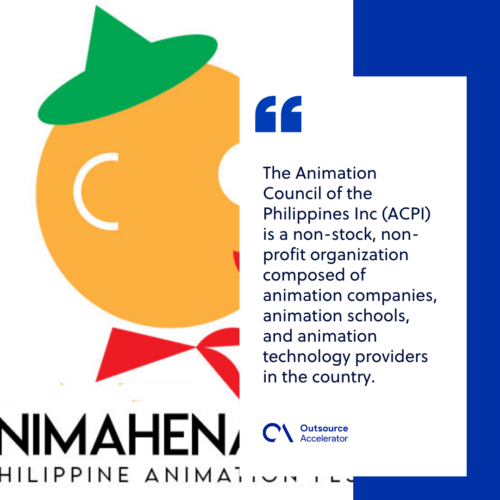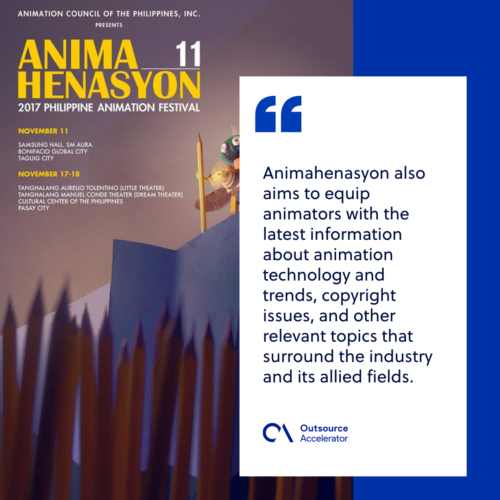Review of ACPI (Animation Council of the Philippines Inc.)

What is ACPI?
What do Scooby Doo, Tom & Jerry, The Addams Family, Dragon Ball Z, Finding Nemo, and The Incredibles all have in common? Apart from being among the world’s best-loved cartoons and animated movies, they have also known the touch of a Filipino animator’s hand.
What’s more, there are also a lot of Filipino animators who have contributed their skills to the gaming industry, including arguably the most popular gaming companies, Nintendo and Sony.
Knowing that this pool of high-quality talent exists in the country, the people behind the Animation Council of the Philippines Inc. (ACPI) decided to band together in 2000 to support and promote Filipino expertise and services in various forms of animation production, both here and abroad.
About ACPI
The Animation Council of the Philippines Inc (ACPI) is a non-stock, non-profit organization composed of animation companies, animation schools, and animation technology providers in the country. Their member companies specialize mainly in traditional, 2D, and 3D animation.
Recognized and supported by the Philippine government, ACPI aims to promote the Philippines’ animation industry, so that the country will be considered among the preferred countries that render services for the animation industry globally.
The organization also aims to promote both local and international Filipino talent and hopes that its member studios will soon be regarded as creatively and technologically competitive outfits around the world.
Education and skills development is also a priority for ACPI. Together with the country’s educational bodies like the Technical Education and Skills Development Authority (TESDA), Department of Education (DepEd), and the Commission on Higher Education (CHED), ACPI has developed comprehensive curriculums, training regulations, and assessment tools for schools that offer or are considering to offer animation courses.
ACPI also regularly conducts workshops and competitions to further hone the skills of current and aspiring Filipino animators. Moreover, ACPI has partnered with multinational companies like AMD, Empire Multimedia, and Ynzal to give Filipino animators access to high-quality tools of the trade.
Driven by its mission to nurture a passion for animation, ACPI envisions itself to be a central force in the growth and development of the animation community in the Philippines. Currently, ACPI has over 15 animation studios under its banner and is proud to serve as a bridge between these Filipino animators and the high demand for their talents across the globe.

First animation conference: Animahenasyon
Animahenasyon, the first and leading animation conference and festival in the country, was launched in 2006 as a platform to celebrate the skills and talents of Filipinos not just in animation but in storytelling through animation, as well.
The festival also aims to encourage both professional and budding animators to explore the various opportunities within and outside the country, as well as to provide a convenient location for the exchange of ideas and business opportunities for groups and individuals.
In line with their goal of education and skills development, ACPI also made Animahenasyon a venue for learning, with various forums and workshops, talks from local and international names in animation, and competitions.
Apart from furthering knowledge, Animahenasyon also aims to equip animators with the latest information about animation technology and trends, copyright issues, and other relevant topics that surround the industry and its allied fields.
In November 2017, ACPI held the 11th edition of Animahenasyon. The event gathered more than 2,500 participants from the academe, local animation companies, global professionals, and independent artists and animators.
With the fast-paced evolution of technology as well as the rise of a younger workforce, the conference explored a range of topics that included the latest innovations like virtual reality and developing company cultures suited for the creative millennial.

The future of the Philippine animation industry
Each year, ACPI tries to bring as many new experiences as possible to Animahenasyon. In its 11th outing, Animahenasyon not only conducted its annual animation competition (which received close to 100 entries), it also showcased a host of animated movies that, according to the organizers, they hoped would inspire and create an impact to local artists when it comes to global trends and standards in animation.
Among the films screened were the critically acclaimed Japanese film Kimi no Na wa (Your Name), and French animated movies Aya of Yop City, My Mommy is in America and She Met Buffalo Bill, and The Girl Without Hands.
ACPI has also expanded its partnerships to include the Department of Information and Communications Technology (DICT), the Cultural Center of the Philippines (CCP), and the Department of Trade and Industry. The goal is to make animation professionals not just competent talent-wise, but also well-versed in the basics of entrepreneurship, which is a valuable bit of knowledge for freelancers and independent artists who have to deal with both the artistic and business aspects of their craft.
Hopefully, in the near future, there would be no artist — animator or otherwise — that would have to undersell their considerable skills.
ACPI, through Animahenasyon, has also promised its support toward the achievement of the goals set in the IT-BPM roadmap. Even as outsourcing continues to be a huge driver of growth for Philippine animation, there is also an increasing demand for original content. Understanding how these two facets of the local animation scene work together to move the industry forward is critical, especially in the next five years.
With these in mind, ACPI aims to answer the question, “What is the Filipino brand of animation?” We have long been an outsourcing destination for animation, but we have yet to establish our identity in the global arena.
With the help of Animahenasyon and ACPI’s other initiatives, the organization aims to make the Philippines not just a pool of skilled animation talent, but also a source of high-quality original animation content.







 Independent
Independent




